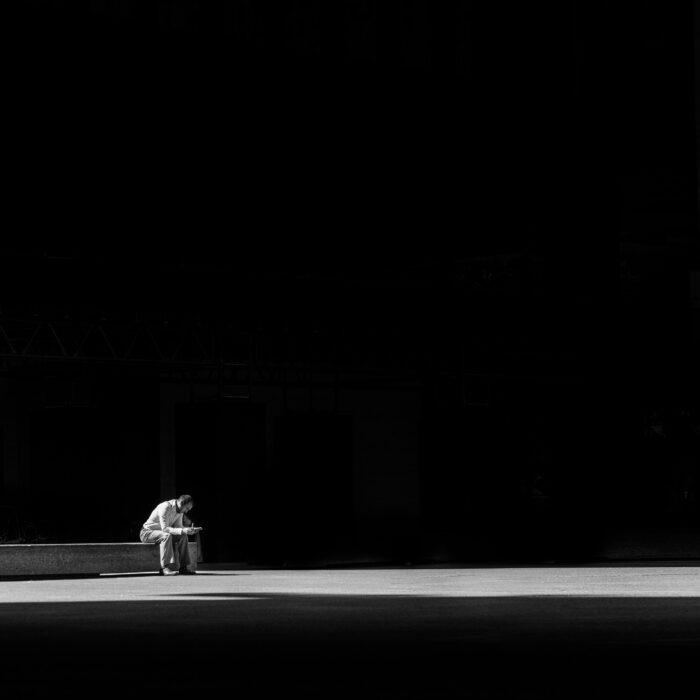You have no items in your cart. Want to get some nice things?
Go shopping
I was first introduced to work of the Japanese writer Yasunari Kawabata by the unlikely figure of a sixteen-year-old Arsenal fan. At the time I was tutoring English literature while writing my first novel. This boy, a struggling A2 candidate, seemed more interested in studying girls and Premiere League transfers than great novels. But private tutoring is full of surprises. Having to teach across three or four exam boards, and juggle upwards of 100 texts, certainly keeps one alert. Discovering hitherto unknown authors was one of its pleasures. Unusually, this fellow’s particular exam board demanded each student pick a novel of their choice and compare it to a set text. Already lost with Books I and II of Paradise Lost, and A Clockwork Orange, he had bravely picked out Kawabata’s Thousand Cranes from a Waterstones’ table on the strength of its cover. A Penguin Modern Classics edition, this featured a striking, mysterious shot of a bamboo blind, effulgent with sapphire and emerald light; a screen of bamboo leaves somehow behind it and before it simultaneously. Intrigued and impressed, I commended his choice. This was partly because the book was short – Thousand Cranes is a mere 100 pages long. When I asked how he was getting on, he shrugged, and said he had read it, but found it ‘confusing’. Now he had less enthusiasm for the essay than before he began. I promised to read the novel, and offer him notes at the next tutorial.
Yasunari Kawabata. I had only vaguely heard of him. My experience of Japanese literature was small. I’d read a couple of Murakamis, but failed to become a convert, unlike many. Along with Murakami, I’d enjoyed a collection of short stories by Mishima, as well as his classic Spring Snow. And as a teenager, I had devoured Tanizaki’s The Key and Diary of a Mad Old Man, largely because I’d heard they were slightly racy. That was the extent of it. The big Russians and the French I could offer advice on, but the Japanese? I immediately Googled Kawabata and was surprised to learn he had won the Nobel in 1968, had written many novels, and was an acknowledged master of the short story. Also that he had taken his own life in his early seventies.
This was a shock. The manner in which an artist’s life ends always subtly colours their work, despite one’s resistance. Keats’ consumption, for instance, or Shelley’s drowning. The suicide of an older, established writer – such as Woolf, Hemingway, or Mishima – casts an inevitable shadow over their oeuvre. As I read on, I discovered Kawabata and Mishima had been friends, and that the former had been greatly disturbed and haunted by the grisly harakiri of his fearless contemporary.
That same evening, I dutifully read Thousand Cranes in one sitting, and was astounded. It was thrillingly alive. Kawabata’s singular voice – dense, intricate, precise, yet oddly irreverent – was the most seductive I’d encountered in years. The prose was concrete, yet strangely weightless: by turns gritty and limpidly beautiful. Cool, but never formal. The novel turned out to be a meditation on fulfilment, isolation, submission, and passivity versus action; an intimate dissection of the tortured relationship between a son, his dead father’s mistress, and her daughter. To pack all this complexity into a hundred pages was quite a feat. But the bare bones were simple.
Kikuji Matani, a twenty-five-year-old bachelor grieving his father, finds himself at a tea ceremony hosted by the manipulative Chikako, a middle-aged woman who kept his father company for the last years of his life. There he encounters his father’s regular mistress, Mrs Ota, and her daughter, Fumiko. Also present is an ethereal young woman – Yukiko, or the ‘Inamura girl’ – who carries a handkerchief bearing a thousand cranes. Kikuji falls into an ‘agony of apprehension’ when he sees that he’s only been invited by Chikako for a miai (a meeting to view a prospective bride). Yet despite his resistance, he’s helplessly drawn to Yukiko. His confusion sets him off on an emotionally disastrous path – sleeping first with Mrs Ota, and then, after her suicide, with her daughter. At one point, Kikuji is ‘haunted by the thought that he was falling in love with Mrs Ota, now that she was dead’. The inference is that Kikuji, by transgressing against his father’s memory, is trying to understand him better, while exploring his own self-hate and doubt. Along the way, he meditates on mutability, the temporal nature of the flesh versus the ageless ‘tea ware’, and the morality of human relationships. While this spiritual quest provides the main meat of the book, the historical context can’t be ignored. Set in postwar Japan, the book subtly depicts a country in violent transition – a nation attempting to value and preserve tradition, while trying to industrialise and embrace modern capitalist values following the carnage of World War Two. However, the novel’s main focus is the contradictory and spontaneous nature of love, something Kawabata nails with uncanny accuracy.
Central to the book is the ancient tea ceremony. The precision and painful etiquette of this is juxtaposed with the messy human desires, bubbling away hotly underneath each character’s composed exterior. The ceremony is transitory, but the utensils – the decorated ceramic cups, the kettles – are as enduring as works of art. This binary opposition is symbolised by the vestige of Kikuji’s late mother’s lipstick on the rim of a Shino bowl. The taking of tea in company stands for an attempt to transcend the tawdry present moment, and thus revivify the soul. For Kikuji, it only makes him meditate more deeply on the fragility of existence, and the twisted love triangle he witnessed while growing up. He comes to realise his own mother knew about Mrs Ota and hated her, while the other mistress, Chikako, hated her too. Kawabata doesn’t spare us his young protagonist’s ‘regret and revulsion’ after sleeping with Mrs Ota, yet he’s tenderly observant about the poignancy of ageing: ‘“You aren’t to stare at me,” she says. “I’m not young any more”’. Kikuji is also repelled by Chikako. The locus of this disgust is the disfiguring birthmark on her breast. ‘Chikako was unmarried because of the birthmark’, his mother observes, bluntly. She had ‘lapsed into sexlessness’. This blemish acts as a repeated motif, contrasting with the beauty of the handkerchief bearing the eponymous thousand cranes. Indeed, much of the book’s startling imagery lingers in the memory. There’s a summer thunderstorm. A jar of fireflies. A morning star. All of these are beguiling, their meanings multiplying long after the book has been finished. Every character, too, is beautifully dawn, with concise brushstrokes. Chikako, with her ‘venomous persistence’ is a wonderful grotesque, an unforgettable presence. And Fumiko, after the death of her mother, with her ‘feet . . . curled beneath her, half hidden by her skirt’, a ‘thoroughly shrunken, helpless figure’, is equally haunting. Kawabata seems to excel at everything a novelist needs to excel at. Here’s a description of a ‘tree-lined avenue’ seen by Kikuji as his train approaches Tokyo Central Station:
It ran east and west, almost at right angles to the railroad. The western sun poured into it, and the street glittered like a sheet of metal. The trees, with the sun behind them, were darkened almost to black. The shadows were cool, the branches wide, the leaves thick. Solid Occidental buildings lined the street.
Towards the end of the book, Kikuji is disturbed to find both Fumiko and the Inamura Girl have married. His missed chances are experienced as ‘a stabbing at the heart’. Fumiko’s marriage is revealed to be a lie cooked up by Chikako, though this revelation provides little comfort. A jar of fireflies comes to symbolise the eternal longing for roads Kikuji should have taken. The fireflies, like the missed opportunities, are ‘alive, even now’.
After finishing Thousand Cranes, I sought out Kawabata’s other novels. None of them disappointed. Snow Country, Beauty and Sadness, and his masterpiece, The Sound of the Mountain, were all exquisite. His Palm-of-the-Hand Stories – some so short they’re a kind of proto-flash fiction – are also stunning. Throughout these books, Kawabata’s locations often present a pastoral Japan. His isolated villages, far from the urban inferno, reinforce the alienation experienced by his distant male protagonists, as they ruminate on past errors and present dilemmas. Graceful, fluid, opaque, yet strangely concrete in their description of contradictory emotions, the narratives seem to float like dragonflies on a stream, while their characters experience the full intensity of shame, thwarted desire, longing, regret and redemption.
Before his mysterious suicide (there were rumours he was terminally ill, or that he gassed himself by accident), Kawabata was a writer who ceaselessly explored the vital subjects: identity, sexuality, spirituality, ageing, mortality, and the inexorable march of time. And nowhere did he do it more perfectly than in Thousand Cranes, a novel far too grown-up for my football-obsessed student. No wonder he found it confusing. When I returned the following week to go over his essay, I struggled to relay how much his chosen text had meant to me. ‘It’s a complicated book,’ he said. Yes, I thought, staring at its mesmerising cover. As complicated and as true as life.

About Jude Cook
Jude Cook lives in London and studied English literature at UCL. His first novel, BYRON EASY, was published by William Heinemann of Random House in February of 2013. He has written for the Guardian, the Spectator, Literary Review and the TLS. His essays and short fiction have appeared in Litro, Structo, Long Story Short and Staple magazine.



